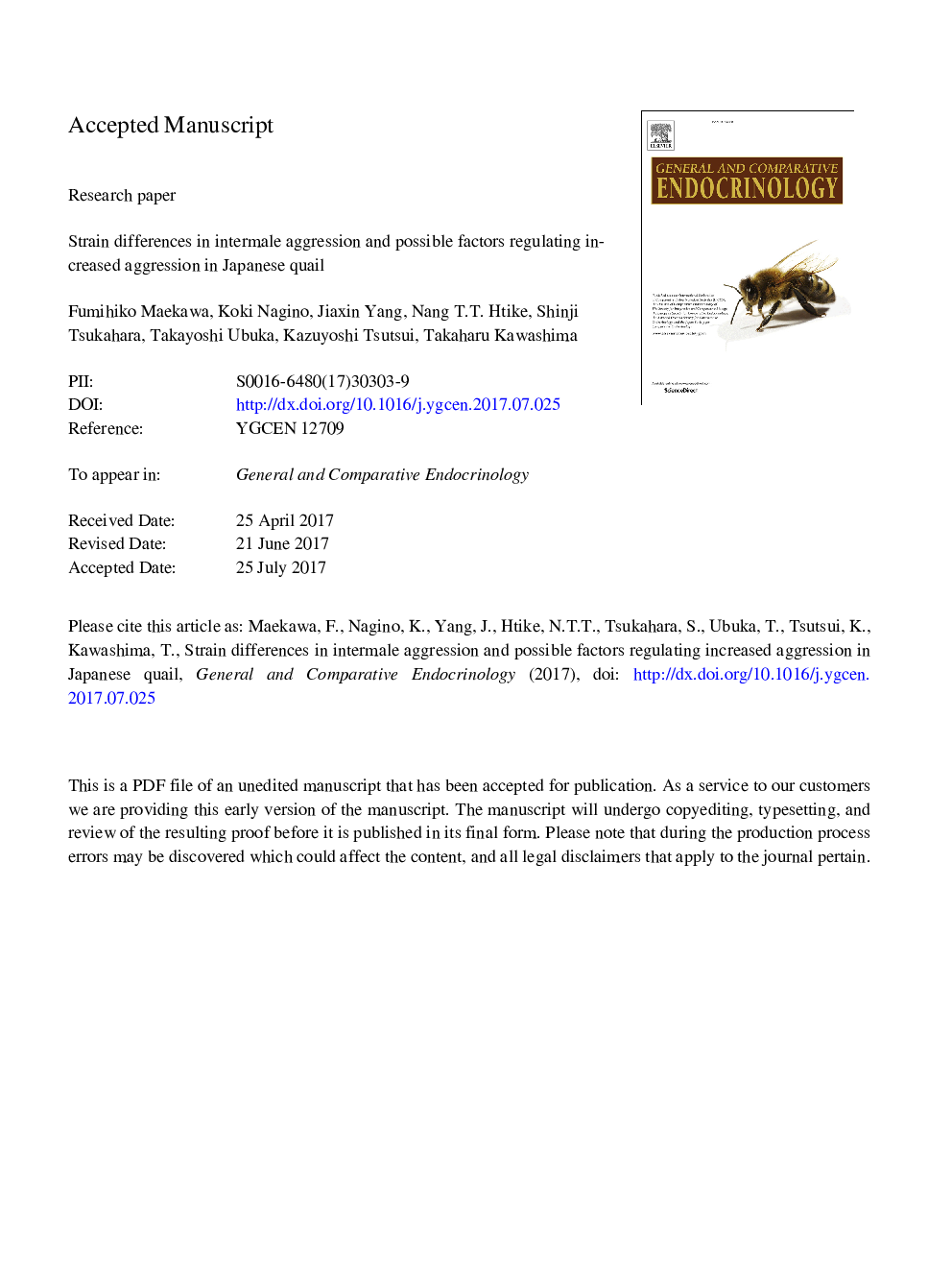| کد مقاله | کد نشریه | سال انتشار | مقاله انگلیسی | نسخه تمام متن |
|---|---|---|---|---|
| 8631396 | 1568851 | 2018 | 25 صفحه PDF | دانلود رایگان |
عنوان انگلیسی مقاله ISI
Strain differences in intermale aggression and possible factors regulating increased aggression in Japanese quail
ترجمه فارسی عنوان
تفاوت های تنش در پرخاشگری بین فاجعه و عوامل احتمالی که باعث افزایش پرخاشگری در بلدرچین ژاپنی می شود
دانلود مقاله + سفارش ترجمه
دانلود مقاله ISI انگلیسی
رایگان برای ایرانیان
کلمات کلیدی
پرخاشگری هیپوتالاموس، بلدرچین ژاپنی، مزوتوسین، نوروپپتید، تستوسترون،
موضوعات مرتبط
علوم زیستی و بیوفناوری
بیوشیمی، ژنتیک و زیست شناسی مولکولی
علوم غدد
چکیده انگلیسی
The National Institute for Environmental Studies (NIES) of Japan established a strain of Japanese quail (Coturnix japonica) known as NIES-L by rotation breeding in a closed colony for over 35 years; accordingly, the strain has highly inbred-like characteristics. Another strain called NIES-Brn has been maintained by randomized breeding in a closed colony to produce outbred-like characteristics. The current study aimed to characterize intermale aggressive behaviors in both strains and to identify possible factors regulating higher aggression in the hypothalamus, such as sex hormone and neuropeptide expression. Both strains displayed a common set of intermale aggressive behaviors that included pecking, grabbing, mounting, and cloacal contact behavior, although NIES-Brn quail showed significantly more grabbing, mounting, and cloacal contact behavior than did NIES-L quail. We examined sex hormone levels in the blood and diencephalon in both strains. Testosterone concentrations were significantly higher in the blood and diencephalon of NIES-Brn quail compared to NIES-L quail. We next examined gene expression in the hypothalamus of both strains using an Agilent gene expression microarray and real-time RT-PCR and found that gene expression of mesotocin (an oxytocin homologue) was significantly higher in the hypothalamus of NIES-Brn quail compared to NIES-L quail. Immunohistochemistry of the hypothalamus revealed that numbers of large cells (cell area > 500 μm2) expressing mesotocin were significantly higher in the NIES-Brn strain compared to the NIES-L strain. Taken together, our findings suggest that higher testosterone and mesotocin levels in the hypothalamus may be responsible for higher aggression in the NIES-Brn quail strain.
ناشر
Database: Elsevier - ScienceDirect (ساینس دایرکت)
Journal: General and Comparative Endocrinology - Volume 256, 15 January 2018, Pages 63-70
Journal: General and Comparative Endocrinology - Volume 256, 15 January 2018, Pages 63-70
نویسندگان
Fumihiko Maekawa, Koki Nagino, Jiaxin Yang, Nang T.T. Htike, Shinji Tsukahara, Takayoshi Ubuka, Kazuyoshi Tsutsui, Takaharu Kawashima,
